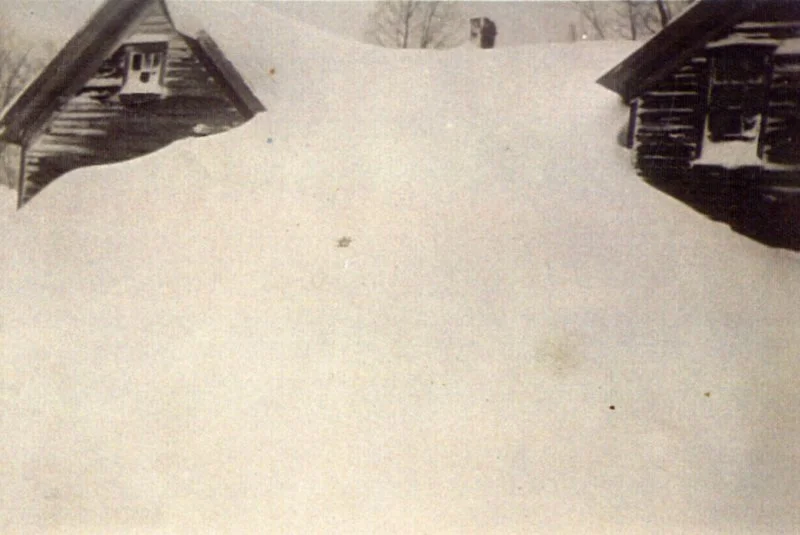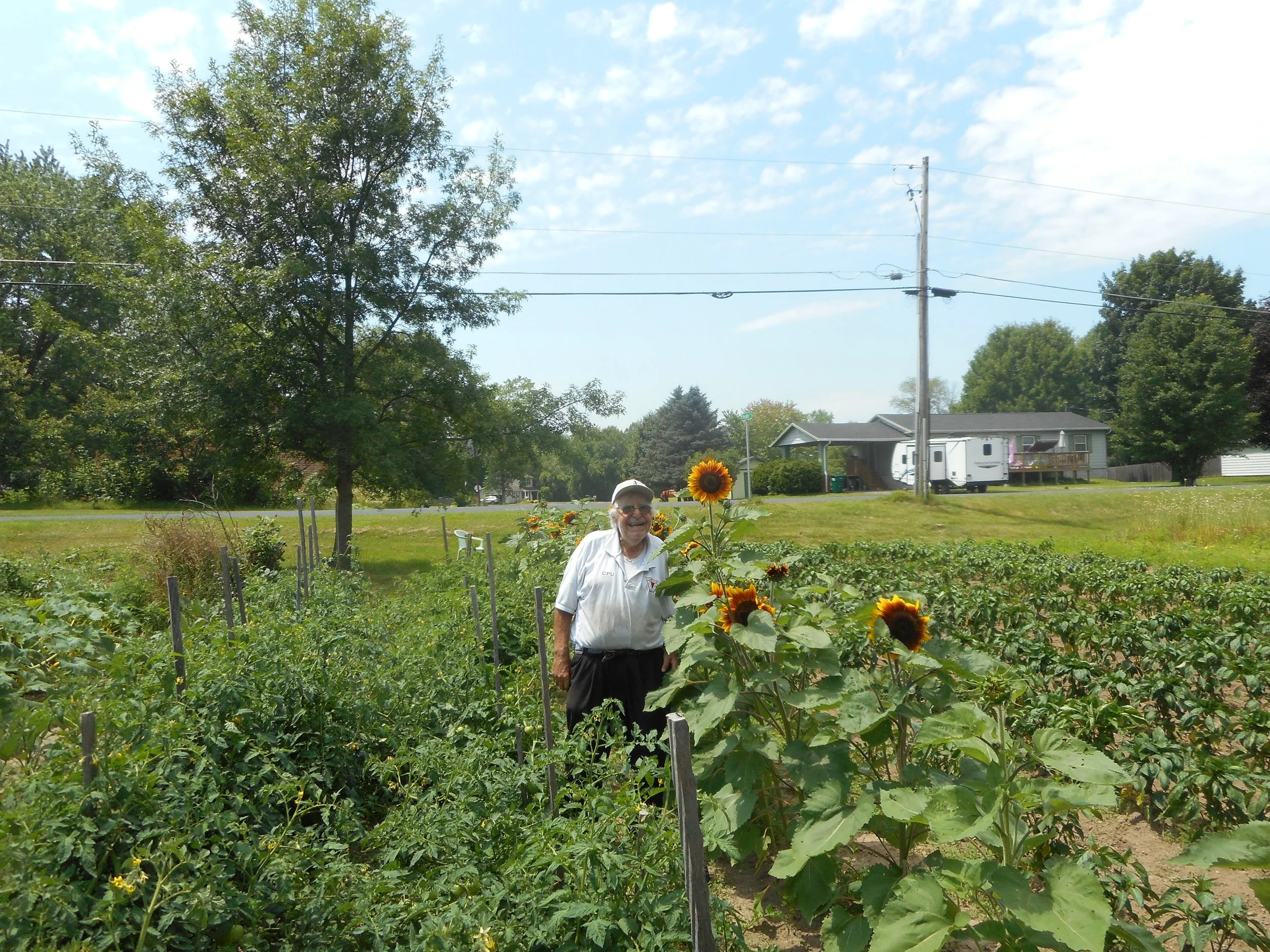I’m pleased to announce the launch of my new book, Historic Snowstorms of Central New York, a look back at how folks survived some nasty winter weather over the last two hundred years. Because my publishing company gave me a strict word count for the book, a few stories that I considered worthy had to be cut from the final manuscript. So, rather than lose the opportunity to tell a good story, I’ll be sharing them in my next few columns. This month’s focuses on Lewis County’s town of Montague and the incredible amount of snow it gets.
How much snow are we talking? How about 466.9 inches, measured in the 1976-77 season. If you’re like me, you need a visual to put that number in perspective. Well, 466 inches is almost 39 feet, about as tall as a four-story building. When I see snowfall totals that big, I want to know more, so I dug into Montague’s history. My first clue as to why the town is home to so much snow is its location directly east of Lake Ontario on the border of Tug Hill Plateau. Measuring 65 square miles and with a current population less than 100, it would seem that Montague is nothing but snow. But it wasn’t always that way.
Shortly after it was founded, in 1850, nearly a thousand people had settled there. Snow or no snow, there was plenty of work at the town’s six sawmills, the largest of which, the Parker Saw Mill, produced over a million board feet of wood a year. The demand for that volume of lumber continued for decades as more folks moved to Central and Upstate New York. But that business boom would end and so would Montague’s rising population.
Lack of jobs was one reason for Montague’s decline, but more important was its ridiculously short growing season. Snow hangs around there so long that farmers have three short three months to plant, grow and harvest crops. That left the town with one claim to fame: incredible snowfall totals. It didn’t take long for Montague to figure out how to capitalize on all that snow.
Beginning in the 1960s, a rise of winter outdoor recreational activities—hunting, snowmobiling and skiing—made Montague’s feet of snow something to experience. News spread of this winter paradise, boosted by stories of mammoth snowfalls. For a while those stories weren’t disputed, but when the science of meteorology formalized, strict rules for taking measurements were established. Overseeing those snowfall counts was the National Weather Service (NWS), and in January 1997, they paid a visit to Montague.
Analysts from the NWS showed up to check on a particularly spectacular snowfall total reported: 77 inches between 1:30pm January 11 and the same time the next day. Need another visual? Seventy-seven inches of snow would just about bury a six-foot man—and his top hat. All that snow…in 24 hours? The NWS wanted to chat with the person who measured that towering snowfall: Bill Ottoshavett.
There are numerous profiles of Bill to be found on the internet and here’s a bit of what I learned: Bill loved snow. He loved it enough to move from his native Connecticut in 1989 to Montague. He described the ’96-’97 season that included the snowfall in question as “quite a wild winter.” And after reporting that one-day total of 77 inches to the NWS, folks in Montague started bragging that they’d beat the 24-hour record set in 1921 in Silver Lake, Colorado, by one inch. But before Montague could send their Colorado competitor a consolation prize (they were considering a case of cream cheese packed in snow), the NWS had some questions for Bill.
They must have asked a lot of questions because when they’d completed their inspection the NWS produced a 56-page report, ending with a decision that did not please folks in Montague. There was a problem, the inspectors noted, with how frequently Bill took his measurements: every four hours. The NWS, however, requires measurements every six hours. Further clouding the issue, when Colorado set the record in 1921, the standard for measurements was once a day. So it became a little like comparing snowapples to snoworanges, if there were such things. The reason for NWS’s final decision? Since Colorado’s snowfall had a whole day to settle, giving it time to condense, it must have been greater than Montague’s 77 inches.
Controversy ended, perhaps, but folks in Central New York take their snowfall totals seriously. Twenty years later, the slight on Montague was still news, with the Post Standard revisiting the story, especially when the town’s big snows kept creating some newsworthy survival sagas. Here’s one from the winter of 2001-02.
That season, from December 26 through January 1, Montague received between 80 and 100 inches of new snow, which sat on top of an already substantial snowfall. This caught a lot of snowmobilers on an extended holiday weekend off guard, including a group of out-of-towners at their camp outside of Montague. As the new year grew closer and the snow kept falling, Tom Ragan, of Rochester, had no choice but to contact the Lewis County Sheriff’s Department with this message: “We’re out of food.”
Now you’d think that snowmobilers could hop on their machines and speed off to the nearest grocer. But the kind of snow that racks up those big totals—lake-effect—is often light and fluffy, and large amounts of it tends to swallow snowmobiles and their drivers. The only option then is to wait for the snow to settle. But not when you’ve run out of food.
To save the day came snowmobile trial groomers Gary Stinson, president of the Barnes Corners Snow-Pals, and groom operator Tim McGuire. Those guys knew how to move snow to be sure, but not while a storm is still raging. Blinding snow driven by high winds made for tough visibility and knocked down trees, too. For two and a half hours the groomers pushed snow depths of eight to ten feet, finally reaching the stranded men’s camp.
I mustn’t forget the one detail that gives this story a happy ending: a cell phone. To be sure, you won’t find that kind of help in my book on historic snowstorms, which covers a time period reaching back to the 1700s. People couldn’t count on cell service or Doppler or GPS. Back then, people were on their own as they dug themselves out of monster snowfalls like those in Montague.
You can find Historic Snowstorms of Central New York at the River’s End bookstore, in Oswego; the Village Shoppes, in Fulton; and Parthenon Books, in downtown Syracuse. It can be ordered online at www.arcadiapublishing.com.
Few of us have experienced mammoth snowfall totals like the one shown in this photo, but in Montague, New York, these big snows are part of a typical winter.


